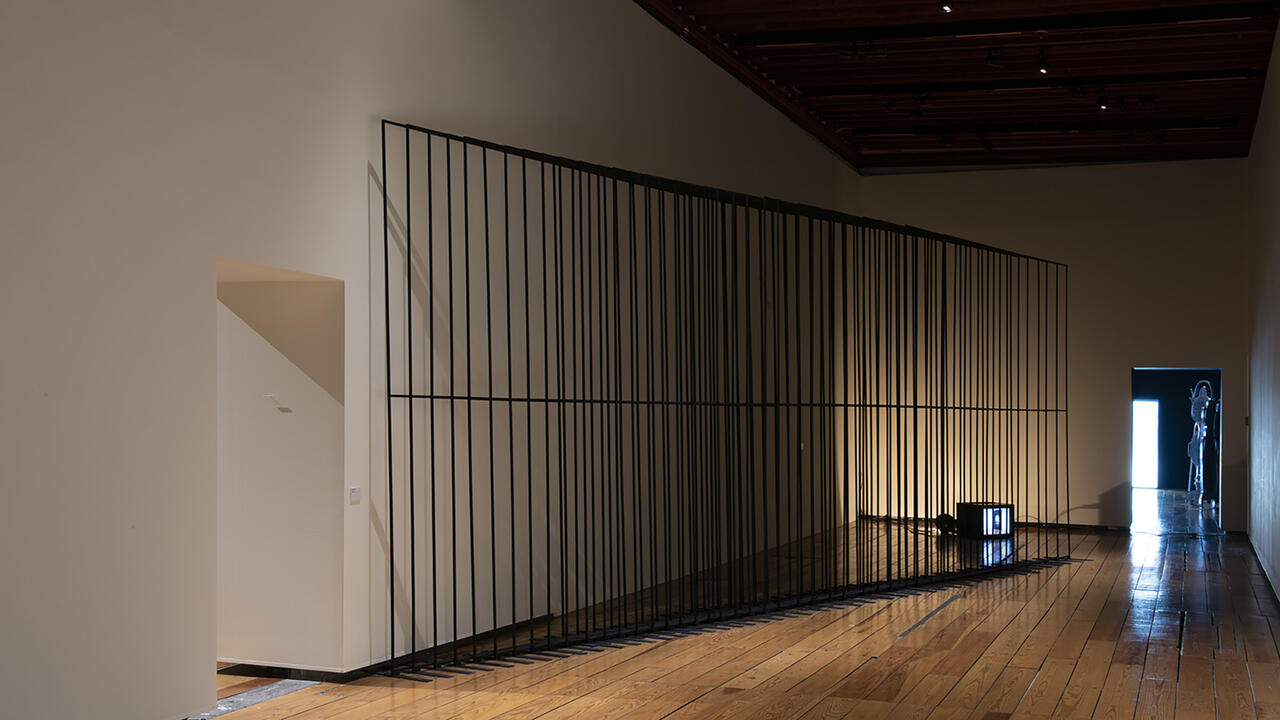Fergal Stapleton
A Philosopher Lecturing on the Orrery (1766), by the English painter Joseph Wright of Derby, depicts an intimate lecture being given around a model of the solar system. A lamp used in place of the sun casts an exaggerated yellow light, rendered in the artist’s characteristic chiaroscuro, onto the faces of the gathered audience, drawing each into the celestial tableau. Wright was one of the first artists to document the scientific and industrial revolutions in paint, and had he lived another five years to witness Sir Humphry Davy’s first experiments with incandescent light, the mysteries of his candlelit orrery might have been illuminated by the cold electric glare of the modern age.
Like Wright’s table-top cosmos (though dragged through abstraction and the space age as imagined by Stanley Kubrick), Fergal Stapleton’s opaque assemblages often describe compact planetary systems, or at least titles such as Planet of the Clowns (2006) or This is Mars (2005) nominally turn lamps and light bulbs of various styles and colours into stars and planets nestling suggestively in painted lunar terrains; at other times visual analogy is relinquished, and the light fittings hang limply from haphazard architectural constructions, naked in their uncomplicated, functional beauty. While the bulbs’ phosphorescent glow bathes his surfaces in a tentative light, they obstinately refuse to illuminate the secretive logic that underpins this eclectic inventory of objects.
‘And a Door Opened’ was the suitably leading title for this show, and for Stapleton’s recent series of works, in which his electrified landscapes have folded in on themselves and become encased within airless, hermetically sealed chambers that shield their reclusive contents. The show comprised five of these receptacles: shiny black boxes fashioned from black Perspex that called to mind the glossy surfaces of orange-lit 1970s’ interiors. As they rested at waist height on rectangular plinths around the walls of the gallery, the viewer was required to bend and crouch in order to peer into their smoky cores, where a red light emanated from internally suspended tinted light bulbs, the wires for which pierced through the protective Perspex casings and snaked down to the ground, anchoring each to an electrical outlet.
It took some time for one’s eyes to shut out the glare of the gallery lighting and become acclimatized to the murky ambience of the scenes contained within, but once past the glint of your own reflection, the contents slowly became clear: smooth-domed forms contrasted with jagged, meteorite-like pieces of rock, some of which rested on circular platforms of varying heights that turned almost imperceptibly. Their seemingly rarefied presentation might at first have suggested contents worthy of preservation, yet a determined examination and a quick glance at the list of works was enough to break the alluring suspension of disbelief peddled by these exotic display cases, as the aspiring fragments of space debris revealed themselves to be nothing more than carefully arranged pieces of asphalt, cast concrete and other scraps of construction materials gleaned by the artist from the industrial backwaters around his studio in east London. The glow of a red light has become an image doused in expectation: of the promise of gratification in the sweaty environs of a prostitute’s boudoir or the consequences of touching that not-to-be-pressed pulsating red button. In Stapleton’s mises-en-scène the orangey-red illumination conjured the space of the photographic dark-room where dormant images slowly reveal themselves in feigned darkness. Agnès Varda has described the photograph as a ‘mysterious surface’, and here Stapleton invokes the medium’s revelatory processes and transubstantiative effects in the way his gathered objects slowly reveal their visual and ontological properties.
Whether the fragments contained within these precious cases are real or fabricated is not the question being posed here; rather, Stapleton’s shambolic orreries toy with the visual codes and frameworks that work to lend images and objects authenticity, masquerading less as didactic tools than as visual playgrounds in which the physics textbook is dismissed in favour of imagination.














